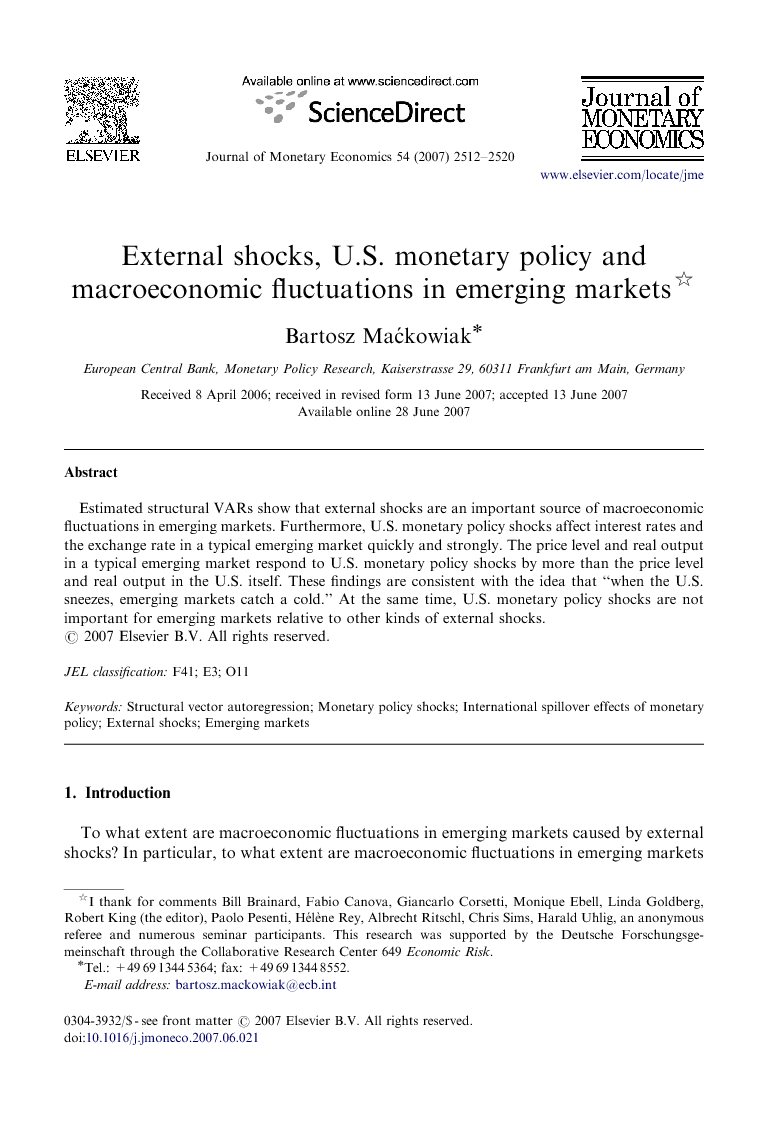ترجمه فارسی عنوان مقاله
شوک های خارجی، سیاست پولی ایالات متحده و نوسانات اقتصاد کلان در بازارهای نوظهور
عنوان انگلیسی
External shocks, U.S. monetary policy and macroeconomic fluctuations in emerging markets
| کد مقاله | سال انتشار | تعداد صفحات مقاله انگلیسی |
|---|---|---|
| 26251 | 2007 | 9 صفحه PDF |
منبع

Publisher : Elsevier - Science Direct (الزویر - ساینس دایرکت)
Journal : Journal of Monetary Economics, Volume 54, Issue 8, November 2007, Pages 2512–2520
ترجمه کلمات کلیدی
شوک سیاست پولی -
اثرات سرایتی بین المللی از سیاست های پولی -
شوک های خارجی -
بازارهای در حال ظهور -
کلمات کلیدی انگلیسی
Monetary policy shocks,
International spillover effects of monetary policy,
External shocks,
Emerging markets,

